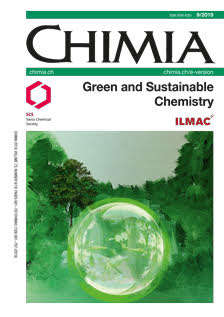Designing Heterogeneous Catalysts for Renewable Catalysis Applications Using Metal Oxide Deposition
DOI:
https://doi.org/10.2533/chimia.2019.698PMID:
31514769Keywords:
Metal oxide deposition, Nanotechnology, Renewable catalysis, Selectivity, StabilityAbstract
Heterogeneous catalysis has long been a workhorse for the chemical industry and will likely play a key role in the emerging area of renewable chemistry. However, renewable molecule streams pose unique challenges for heterogeneous catalysis due to their high oxygen content, frequent low volatility and the near constant presence of water. These constraints can often lead to the need for catalyst operation in harsh liquid phase conditions, which has compounded traditional catalyst deactivation issues. Oxygenated molecules are also frequently more reactive than petroleum-derived molecules, which creates a need for highly selective catalysts. Synthetic control over the nanostructured environment of catalytic active sites could facilitate the creation of both more stable and selective catalysts. In this review, we discuss the use of metal oxide deposition as an emerging strategy that can be used to synthesize and/or modify heterogeneous catalysts to introduce tailored nanostructures. Several important applications are reviewed, including the synthesis of high surface area mesoporous metal oxides, the enhancement of catalyst stability, and the improvement of catalyst selectivity.Downloads
Published
2019-09-18
Issue
Section
Scientific Articles
License
Copyright (c) 2019 Swiss Chemical Society

This work is licensed under a Creative Commons Attribution-NonCommercial 4.0 International License.
How to Cite
[1]
Chimia 2019, 73, 698, DOI: 10.2533/chimia.2019.698.







